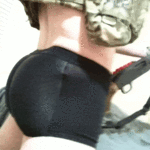|
Also being allergic to that material forever, that's a big benny. It's like Mercury poisoning, latex sensitization, epoxy allergies. You don't go in to anaphylaxis/ go mad / get cancer touching the stuff once, or even infrequently without PPE. But keep doing it without PPE and a couple years later, maybe a decade, who knows what your tolerance is, and suddenly things like kidneys or livers stop working right. Now imagine instead you're injecting Mercury salts into your blood, or washing your face in powdered latex. Tear off that asbestos pipe liner with your angle grinder. That poo poo will hit way faster. It's basic chemical safety. Don't aerosolize cancerous chemicals, you have a huge surface area in your lungs to absorb every speck of that chemical.
|
|
|
|

|
| # ? May 31, 2024 00:48 |
|
biracial bear for uncut posted:YouTube guy is in for a bad time if he does that too much. Lots of things can really wreck you without appropriate ppe. Woodworkers can develop wood allergies, silica dust can permanently ruin your lungs, etc etc. And those don't have some of resin's special properties. Scarodactyl fucked around with this message at 22:35 on Dec 9, 2021 |
|
|
|
Scarodactyl posted:Well of course he's in for a bad time if he does it 'too much,' that's what 'too much' means! Hell, people forget that IPA is actually pretty dangerous. Like I'm generally more concerned about getting large amounts of IPA on my skin than I am resin, mostly because the risk with resin is an errant drop vs. total immersion with IPA. A lot of people who get reactions when they splash some resin-soaked IPA on their skin might legit just be getting a reaction to the alcohol. Part of the reason I haven't tried using acetone to clean prints is that I once so saw someone in a lab break out in a massive, disgusting red rash almost immediately after splashing some acetone on their arm. gently caress that.
|
|
|
|
Sagebrush posted:The little zits and ripples are printer tuning issues. The larger polygonal grid across the entire model is the actual polygon mesh of the STL, which you correctly note is a little bit too low-res for a model of that size. It's a modeling issue, not a slicer thing. I have heard this filament popping a bit, even though its only been open a couple days (hatchbox matte gray) so that can account for some of the zits, but looking at the pictures i see the ringing /ghosting that i cant in person. And with a new print i started i can see i had my z way too low. Looks like i need to shut down, replace what i was going to, and calibrate and tune. I just can't stop printing. Actually this table i am on feels like its more wobbly then usual. This might be the place to start Roundboy fucked around with this message at 01:24 on Dec 10, 2021 |
|
|
|
Scarodactyl posted:Well of course he's in for a bad time if he does it 'too much,' that's what 'too much' means! Wood dust will also wreck your lungs. Especially when you neglect wearing a facemask cause you picked up a bag filter, which just happens to not filter out the part of wood that does the most permanent damage, and instead pumps the room full of it. Bondematt fucked around with this message at 07:49 on Dec 10, 2021 |
|
|
|
I've just ordered a elegoo saturn but I'm starting to get anxious about the hazards of resin. My initial plan was to run it in my small home office (9' x 8') overnight and at weekends but I'm not sure if the resin will still be too pungent? My other option is to run it in the garage, however there are no windows in the garage to ventilate it. I assume that isn't so much of a problem since I won't be in there with the printer while it's running?
|
|
|
|
Unless your garage is airtight that shouldn't be a problem/should be fine (assuming it's a separate structure). You'd literally have to do what that dumbass in the youtube video was doing to make it a problem in terms of air quality. I definitely wouldn't run a resin printer anywhere inside my living spaces though. Just open the door and let it air out for a few minutes before going in and doing any work.
|
|
|
|
Paradoxish posted:Hell, people forget that IPA is actually pretty dangerous. Like I'm generally more concerned about getting large amounts of IPA on my skin than I am resin, mostly because the risk with resin is an errant drop vs. total immersion with IPA. A lot of people who get reactions when they splash some resin-soaked IPA on their skin might legit just be getting a reaction to the alcohol. IPA isn't particularly dangerous, fire risk aside. Neither is acetone. Breathing a ton of vapor is bad, but this is true of any organic solvent. Resin is much much worse. I don't know where your info comes from, but it's wrong. Iso: https://fscimage.fishersci.com/msds/89530.htm Acetone: https://fscimage.fishersci.com/msds/00140.htm Prusa resin: https://www.prusa3d.com/file/60719/safety-data-sheet.pdf You will get sensitized to resin over time. It's not an "if" it's a "when". I'll gladly wash my hands in either iso or acetone before I willingly get resin on my skin.
|
|
|
|
I used to think I wasn't allergic to Poison Ivy. I never got a poison ivy rash growing up despite it being everywhere in the woods behind the house. Eventually I got cocky about it and would pull it out by hand (and yes, I was sure it was poison ivy) or even rub it on my face. Two years ago I was clearing poison ivy out of the backyard here and was wearing gloves, but got some on my arm and found out the hard way I had burned through my insensitivity. I never knew how miserable poison ivy was until then. So yeah, don't screw with it. Also, the long term effects of resin exposure haven't been determined.
|
|
|
|
sharkytm posted:IPA isn't particularly dangerous, fire risk aside. Neither is acetone. Breathing a ton of vapor is bad, but this is true of any organic solvent. Resin is much much worse. I don't know where your info comes from, but it's wrong. I don't know why you thought my post was saying that resin isn't worse. Both of those datasheets say exactly what I was saying: that IPA and acetone can be pretty severe irritants if they contact your skin or eyes. The resin datasheet says the same thing, in addition to it being a sensitizer. IPA can be absorbed through your skin and spilling a large amount on yourself or immersing your hands in it without protection is a bad idea.
|
|
|
|
IPA is literally hand sanitizer my dude
|
|
|
|
Isopropanol is not a "severe irritant" unless you have an unusual sensitivity to it. It is a fairly good degreasing agent, though, and it will dry out your skin in high concentrations. Hand sanitizers don't use 99% stuff like you do for printing, and they frequently include moisturizers in the formula. But you don't need to treat isopropanol like toxic waste. Just don't take a bath in it. The resin is significantly more of a concern than the alcohol.
|
|
|
|
Tea Bone posted:I've just ordered a elegoo saturn but I'm starting to get anxious about the hazards of resin. My initial plan was to run it in my small home office (9' x 8') overnight and at weekends but I'm not sure if the resin will still be too pungent? Resin printing is safe as can be with PPE. Part of your PPE is indoor air quality. You need to examine if you have enough air changes where you plan to work. Basically you need around a third of your indoor air changed every hour. In general houses are designed to properly do this, but you may need to turn on the furnace fan or open a window to help. This isn't just a 3D printing thing. Unfinished edges of MDF can release formaldehyde. Too many people in a room raise the CO2 levels. Acrylic paint can be aerosolized in an airbrush and be just as dangerous as any VOC paint when you don't capture those fine particles.
|
|
|
|
Had a weird resin leak from my tank after a print- all around the edges where the tank meets the LCD plate, but nothing underneath, and no residue on the FEP underside at all. gonna leave it overnight and see if anything else leaks out to confirm/deny some sort of weird FEP pinhole leak or tear at the extreme edge of the tank bottom. Iím printing something that takes up most of the build plate so maybe the excess resin found a way to drip onto the tank edge and spilled over? didnít think that should be possible but idk in any case, thanks whoever recommended sealing the gap between the LCD cover and the printer body with kapton tape, it stopped any resin from running down into the guts of the thing without me having to add a full screen protector with its extra diffusing downside.
|
|
|
|
Sockser posted:Whenever I start having weird adhesion problems, I run through this guy a couple times I finally went ahead and tried this and thank you so much for posting it because it takes so much of the pain out of dialing in the z-offset. Two or three of these and the first layer looks perfect. Naturally, after using the above method on both filaments, I ended up with the same z-offset for both. The silver filament still works better but now I can do a print with the grey without having to reset 3 times because it balled up on the nozzle. I did an acetone wipe and that fixed the messy parts on the grey stuff that were still lifting off the bed.  So now both look like this. Although, the middle of the D still didn't stick to the sheet, but, whatever. I can get back to what I was doing now. Thanks!
|
|
|
|
Ambrose Burnside posted:Had a weird resin leak from my tank after a print- all around the edges where the tank meets the LCD plate, but nothing underneath, and no residue on the FEP underside at all. gonna leave it overnight and see if anything else leaks out to confirm/deny some sort of weird FEP pinhole leak or tear at the extreme edge of the tank bottom. Iím printing something that takes up most of the build plate so maybe the excess resin found a way to drip onto the tank edge and spilled over? didnít think that should be possible but idk It's entirely possible you had some resin spill outside the vat and wicking action pulled it all around the plate.
|
|
|
|
yeah, i haven't seen a drop since. i think i had the low point of my print at the extreme edge of the tank over the thumbscrew, so the resin drainage was all directed to a spot where it'd run in all directions inc. outside the tank. another factor to think about wrt part layout on the table going forward i guess also: designed and printed a metal casting mold for a mini version of that antique involute wrench i modelled last week. the text i chose for the handle lettering was way too spindly and small and the bleed and/or overexposure filled in a lot of it p badly, i'm afraid the final text will be illegible. but hey, let's see how it goes with a pour later today 
Ambrose Burnside fucked around with this message at 18:10 on Dec 11, 2021 |
|
|
|
My Saturn prints are failing. I can get the supports to adhere to the build plate but when it comes time for the actual model they all stick to the fep in the resin vat. I've tried several model types and used pre supported files and created supports in both ChituBox and Lychee. I am using the Elegoo standard resin in grey and have been using their recommended settings (30 second bottom exposure, 2.5 second normal exposure, 0.05mm layer height). Can anyone point me towards what I should be looking at tweaking to help improve my prints? 
|
|
|
|
If I wanted to get the best possible adhesion between layers, am I right in thinking going for a taller layer height (within the limits of my nozzle size, so 0.2mm with a 0.4mm nozzle), reducing the amount of layers, is the way to go? I'm already going to be doing it with the walls thick enough that no infill's needed, but the shape of the thing I'm designing precludes printing so the layers are parallel to the load they're under. I do have a 0.8mm nozzle I could try with a 0.4mm layer height if thread wisdom is that this is likely to be stronger. (If anyone's interested, it's an adaptor for my aircon exhaust hose, so not likely to be under *massive* strain, but the flange that attaches it to the machine is pretty thin and the strain on it is likely to be perpendicular to the layers and pull them apart)
|
|
|
goddamnedtwisto posted:If I wanted to get the best possible adhesion between layers, am I right in thinking going for a taller layer height (within the limits of my nozzle size, so 0.2mm with a 0.4mm nozzle), reducing the amount of layers, is the way to go? I'm already going to be doing it with the walls thick enough that no infill's needed, but the shape of the thing I'm designing precludes printing so the layers are parallel to the load they're under. I do have a 0.8mm nozzle I could try with a 0.4mm layer height if thread wisdom is that this is likely to be stronger. Yes to all. I've been meaning to get some >0.4 nozzles to play with for that reason..
|
|
|
|
|
goddamnedtwisto posted:If I wanted to get the best possible adhesion between layers, am I right in thinking going for a taller layer height (within the limits of my nozzle size, so 0.2mm with a 0.4mm nozzle), reducing the amount of layers, is the way to go? I'm already going to be doing it with the walls thick enough that no infill's needed, but the shape of the thing I'm designing precludes printing so the layers are parallel to the load they're under. I do have a 0.8mm nozzle I could try with a 0.4mm layer height if thread wisdom is that this is likely to be stronger. Layer height doesn't make a huge difference until you exceed half your nozzle diameter where strength drops off sharply. https://www.cnckitchen.com/blog/the-influence-of-layer-height-on-the-strength-of-fdm-3d-prints
|
|
|
|
ok this is an incredibly cool resin printer gimmick    turns out it's trivial to fill your bed up with prewoven chainmaille designs, or scalemaille in this case, stitching panels together to make larger assemblies. each ring or scale gets its own support or two and you peel the whole sheet off the support structure at once, easy peasy. i haven't done maille in a million years but this would be super easy and cheap to produce significant sections of in comparison to the real handwoven thing for, say, cosplay applications. also metal scales don't come in translucent amethyst colours
|
|
|
|
Hekk posted:My Saturn prints are failing. I can get the supports to adhere to the build plate but when it comes time for the actual model they all stick to the fep in the resin vat. I've tried several model types and used pre supported files and created supports in both ChituBox and Lychee. I am using the Elegoo standard resin in grey and have been using their recommended settings (30 second bottom exposure, 2.5 second normal exposure, 0.05mm layer height). Normally when they don't stick I relevel the bed. So, step 1, relevel. Step 2 is ambient temp, make sure it's warm near the resin. Radiator is fine for this. Cold resin doesn't want to cure and wants to mess up your prints. Step 3 is generally a mixture of "add more supports" and "use spheres instead of minimal contact" because the resin isn't sticking to itself with enough force to overcome the suction force of the plate moving off the bed. Also, make sure you didn't crank the speed up on there cause too fast will do the same thing.
|
|
|
|
Stupid_Sexy_Flander posted:Normally when they don't stick I relevel the bed. So, step 1, relevel. Step 2 is ambient temp, make sure it's warm near the resin. Radiator is fine for this. Cold resin doesn't want to cure and wants to mess up your prints. Step 3 is generally a mixture of "add more supports" and "use spheres instead of minimal contact" because the resin isn't sticking to itself with enough force to overcome the suction force of the plate moving off the bed. Also, make sure you didn't crank the speed up on there cause too fast will do the same thing. Ahh ok I think I see the problem then. My basement is only mid 60s F. Looks like it's outside the optimal resin temperature. Thank you.
|
|
|
|
Ambrose Burnside posted:ok this is an incredibly cool resin printer gimmick That's pretty cool, but what are those comically oversized gloves?
|
|
|
|
No problem. Most resins are ok for a few degrees outside of their optimal temp but some are complete bastards about it. The siraya tech V2 clear is one of those that pretty much has to be DEAD ON or congrats on your pile of expensive goo.
|
|
|
|
Stupid_Sexy_Flander posted:Normally when they don't stick I relevel the bed. So, step 1, relevel. Step 2 is ambient temp, make sure it's warm near the resin. Radiator is fine for this. Cold resin doesn't want to cure and wants to mess up your prints. Step 3 is generally a mixture of "add more supports" and "use spheres instead of minimal contact" because the resin isn't sticking to itself with enough force to overcome the suction force of the plate moving off the bed. Also, make sure you didn't crank the speed up on there cause too fast will do the same thing. Since I'm an atrocious nitpicker I'll point out that there's no way this is a leveling issue. A leveling issue presents as nothing at all on the build plate. As you point out, this is likely a temperature issue, but this is also how underexposure and overexposure can look. Hekk posted:Ahh ok I think I see the problem then. My basement is only mid 60s F. Looks like it's outside the optimal resin temperature.
|
|
|
|
biracial bear for uncut posted:That's pretty cool, but what are those comically oversized gloves? TPE, i prefer them over nitrile gloves for most work because theyre 'sufficient' and cheap enough that i can throw a pair away every time i touch resin and not think twice about it. like 500 gloves for 5 bucks kinda cheap. i inevitably find myself wanting to stretch out the lifetime of nitrile gloves, wash off little resin spills instead of change the barrier, etc just to save a penny, and generally find myself not following the iron law of "change gloves when they contact the Dreaded Sensitizer b/c all these materials are only temporary barriers". the PPE material here matters less than how it's used, ergo i use the cheap lunchlady gloves b/c that steers me towards best practices. if i have to do fiddly or dextrous work or don't expect to immediately dip my hand into the tank i use normal-person nitriles, yeah. i also have butyl rubber gauntlets that i tried to use as longer-term replacements for disposable gloves but that was a total failure, they become permanently tacky and you can't do anything precise with your hands Ambrose Burnside fucked around with this message at 03:57 on Dec 12, 2021 |
|
|
|
I use heavy nitrile commercial dishwashing gloves, the same pair for all my resin work, and I'm pretty sure the chemicals aren't passing through them. I rarely get more than a drop or two on the gloves anyway. idk what all y'all are doing but I only touch the prints with tools before they are rinsed and cured, and I never touch the parts of the build plate that go into the vat.
|
|
|
|
Sagebrush posted:I rarely get more than a drop or two on the gloves anyway. idk what all y'all are doing but I only touch the prints with tools before they are rinsed and cured, and I never touch the parts of the build plate that go into the vat.
|
|
|
|
I let the build plate drip for a couple of minutes to a couple of hours in the printer, then transfer the whole thing directly to the washing vat on a hanger and whirl it around for a while. Never touch anything but the build plate knob and mount in this process. Once the plate is done washing, rinse it in clean alcohol and let that evaporate. Pry the prints off while only holding the scraper and the build plate mount (one edge of the plate resting on a paper towel for leverage). Pick up the prints with tweezers, swish them again, let them dry for a while. Into the curing station with tweezers. The first time I touch them with my fingers is after they're cured, or in special cases after the second wash if I want the supports to still be soft as I'm removing them (in which case I am using gloves, obviously, but it's basically all alcohol at that point). I never touch the plate with anything but the scraper. idk, maybe i'm just a very delicate operator Sagebrush fucked around with this message at 04:24 on Dec 12, 2021 |
|
|
|
Sagebrush posted:I let the build plate drip for a couple of minutes to a couple of hours in the printer, then transfer the whole thing directly to the washing vat on a hanger and whirl it around for a while. Never touch anything but the build plate knob and mount in this process. Once the plate is done washing, rinse it in clean alcohol and let that evaporate. Pry the prints off while only holding the scraper and the build plate mount (one edge of the plate resting on a paper towel for leverage). Pick up the prints with tweezers, swish them again, let them dry for a while. Into the curing station with tweezers. The first time I touch them with my fingers is after they're cured, or in special cases after the second wash if I want the supports to still be soft as I'm removing them (in which case I am using gloves, obviously, but it's basically all alcohol at that point). I never touch the plate with anything but the scraper.
|
|
|
|
Sagebrush posted:I use heavy nitrile commercial dishwashing gloves, the same pair for all my resin work, and I'm pretty sure the chemicals aren't passing through them. The material properties that make gloves stretchy and supple also make them inherently porous on a molecular level; in the laboratory I was always told to regard PPE as buying me some time & limiting potential exposure with really nasty compounds, instead of treating it as an impermeable barrier. On top of that, nitrile is not the ideal barrier material for ester acrylates and is not regarded as long-term suitable, butyl rubber is best but its downsides become apparent fairly quickly. your process seems particularly hands-off but you should still probably be changing out your gloves, imo; i'm careful but I still seem to get a bit of resin on my mitts at least once per print or two. e: fwiw, my workflow is: hang the build plate to drip for a few minutes, then i use a stiff silicone spatula to squeegee as much resin as possible off of the plate and the model so I can reclaim it in the vat before any solvents become involved. once I've wrung it dry in this manner I work the print off the bare build plate with a sharp knife or single-bit chisel (i've stopped using my flexplates out of preference, believe it or not) and drop them into the first-pass Wash-Cure tank for a spin. then they get a second wash in the finishing wash-cure bucket, and with extremely persistent resins like Sculpt Ultra i also manually work a soft-bristle brush into all the print crevices while it's soaking in the final alcohol bath. after this they get dipped in a water bath to remove any resin-saturated alcohol residue, and either UV post-cured in that water bath (my preference wherever possible) or dried and then post-cured in open air, for the handful of resins that specify not water-curing my main priorities are reclaiming the $$$ engineering resins I try to use sparingly- i guesstimate 5-10 ml for most prints can often be reclaimed before the alcohol bath step, which is nice at $120/litre- and ensuring i end up with very clean prints with no post-processing residues, b/c any resin on the mold rejects the graphite dry lube i dust the mold with pre-casting and tends to destructively weld the mold halves together. i handle almost every print at least briefly, so frequent and rigorous glove changing is warranted. Ambrose Burnside fucked around with this message at 05:29 on Dec 12, 2021 |
|
|
|
InternetJunky posted:Not sure how this is possible, but I tip my hat to you. I get resin all over my (gloved) hands every time I take prints off the plate whether I'm using a flex plate or not. I go through a box of 500 gloves in a month. I use gloves, but really the only time I get resin near my hands is when cleaning the vat or filtering resin. The Photon SE is pretty good at letting the resin run off the buildplate, so I just remove the whole buildplate, dunk it in the wash/cure machine.
|
|
|
|
The OSHA thread pointed out this guy's channel with laser engravers and it turns out he posted a pretty funny update about a bunch of the cheap open-frame lasers out there. Since people have asked here about laser options because the fuckers at Glowforge keep calling their machine a 3d laser printer. Anywhere, here it is: https://www.youtube.com/watch?v=u2LH7SAdnZ0
|
|
|
|
InternetJunky posted:Since I'm an atrocious nitpicker I'll point out that there's no way this is a leveling issue. A leveling issue presents as nothing at all on the build plate. I upped the exposure to 3 seconds and prints came out pretty close to perfect. I just need to work out my rinsing and curing and when and where I remove supports and I think I am ready to show my 17 year old how we can make some minis. Thanks for the help.
|
|
|
|
biracial bear for uncut posted:The OSHA thread pointed out this guy's channel with laser engravers and it turns out he posted a pretty funny update about a bunch of the cheap open-frame lasers out there. I have a cheap Chinese laser engraver that has an enclosure and I soldered in a latch switch for the door that cuts power to the laser when it's open. I could not imagine having one of these without an enclosure. I don't even trust the viewing window on mine to be safe.
|
|
|
|
Unperson_47 posted:I have a cheap Chinese laser engraver that has an enclosure and I soldered in a latch switch for the door that cuts power to the laser when it's open. I could not imagine having one of these without an enclosure. I don't even trust the viewing window on mine to be safe. K400 or whatever they call them now?
|
|
|
|
biracial bear for uncut posted:K400 or whatever they call them now? K40 likely. I have one of those, which I've upgraded to better exhaust and a mesh bed and it works quite well. Definitely a step up from the diode engravers, which I also have. I'm waiting to reconfigure my garage area to have the diode laser set up semi-permanently because it doesn't come with an enclosure, and doesn't require water cooling. Considering I got my K40 for less than $500 including shipping and the few bits I've changed from stock, the diode lasers they keep sending are definitely not worth the cost.
|
|
|
|

|
| # ? May 31, 2024 00:48 |
|
AlexDeGruven posted:K40 likely. Any advice on K40s? If I move to a bigger garage, I want to get one. What can it cut?
|
|
|






































